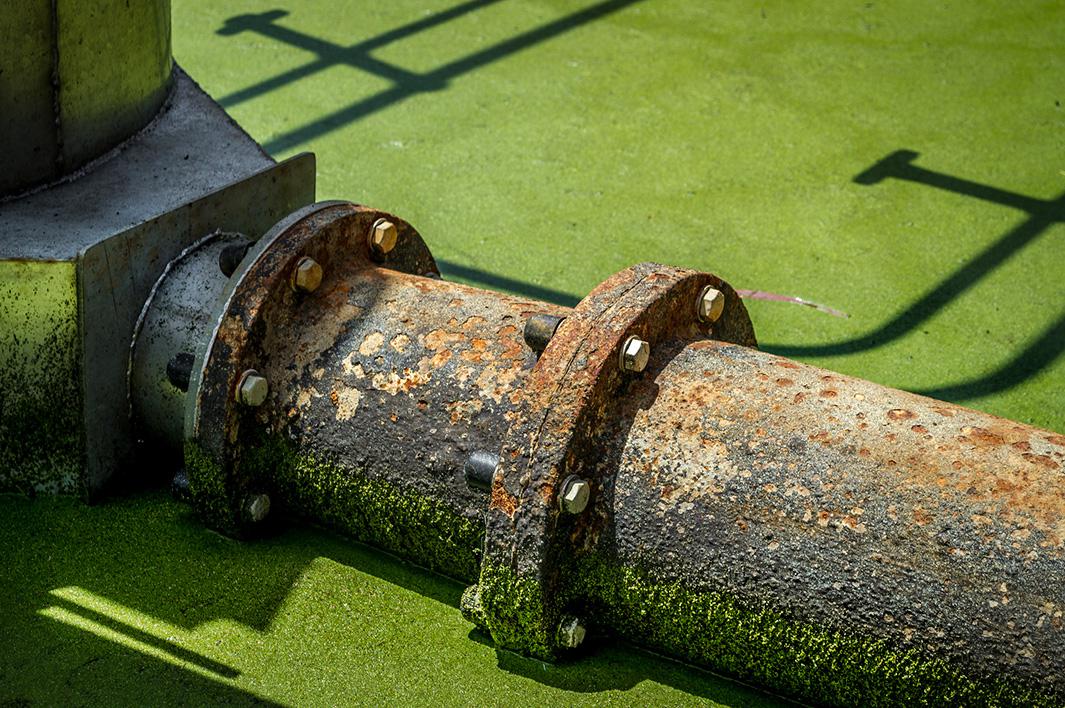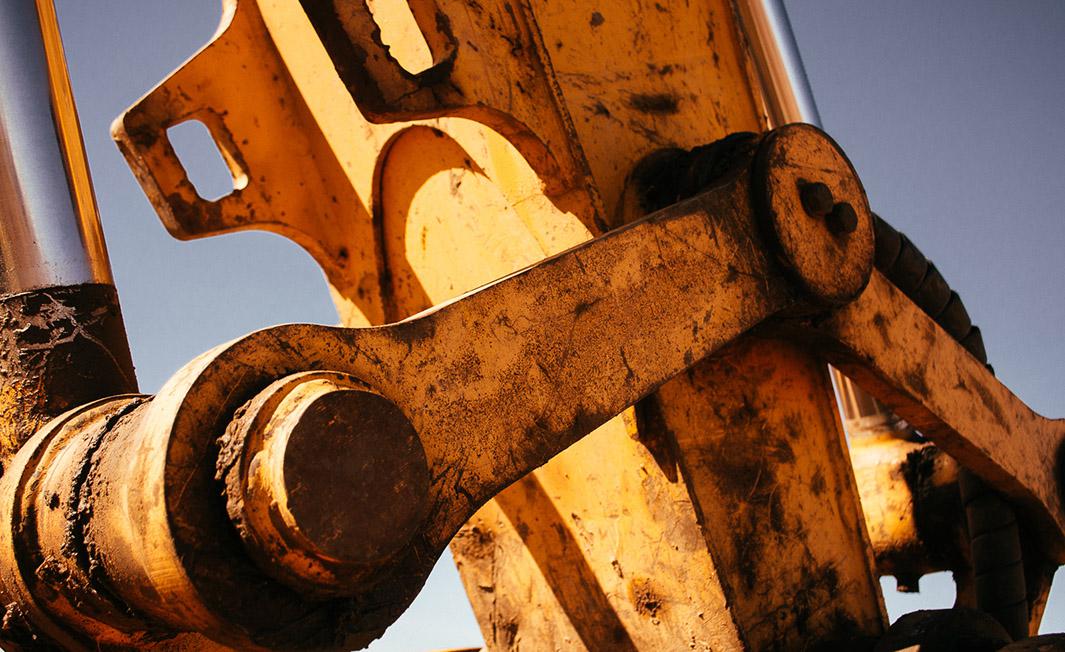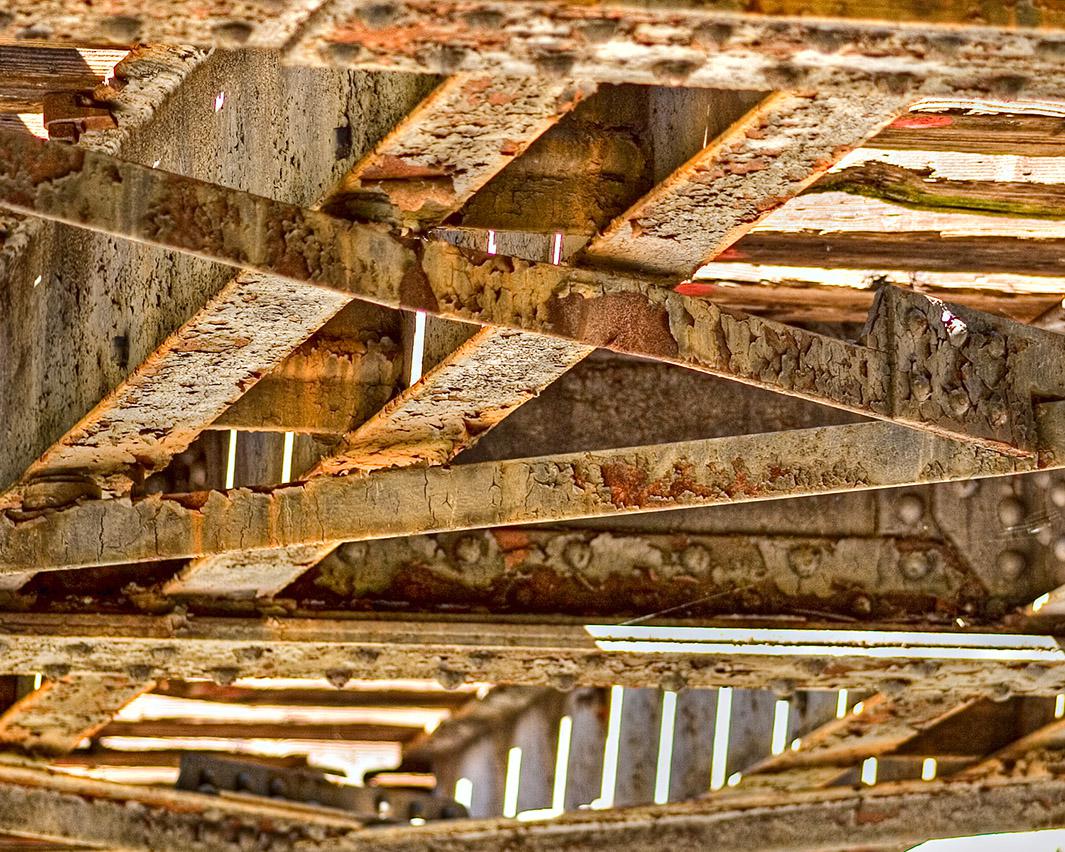The most destructive natural disaster in the history of the modern world is not very scary. Snowpocalypses and arctic vortices steal our attention, and hurricanes and supertornadoes freak us out, but rust just nags, constantly, like a swarm of mosquitoes. To an enormous rogue wave, it’s a steady trickle. This persistence, combined with corrosion’s ubiquity, lends it familiarity, which in turn allows us to dismiss it. Oh, yeah: rust. Duh. Only rarely—when it fells bridges, or downs planes, or sparks house fires—does rust seem terrible, but even then, it’s hard to muster a reaction to a force so undramatic. FEMA certainly doesn’t bother. Rust demands little attention because it’s so insidiously sluggish. It’s just not a mighty thing of wild and terrifying beauty.
In the few years I spent looking at how we attempt, behind the scenes, to defend the modern world from rust, I met only one person who sees rust differently. (And what a relief that was, after spending so much time with stubbornly linear engineers.) She’s a photographer named Alyssha Eve Csuk, and she grew up in the Rust Belt, beside the rustiest spot in America. She’s from Bethlehem, Pennsylvania, home of Bethlehem Steel, once the world’s second-largest steel producer. For years, steelworkers there swore they could tell from the thickness of the rust that settled on windshields and windowsills around town how big their paychecks would be. Those paychecks stopped when the steelworks shut down in 1995, and since then the place has done nothing but rust. It’s been rusting since the middle of the Civil War—and now, from the air, the steelworks looks like a decrepit brown castle in an otherwise leafy green city.

Photo by Benjamin Deutsch/Flickr Creative Commons
I caught up with Csuk on a snowy November day. As she had done hundreds of times, she snuck in to the steelworks to hunt for rust. That’s how Csuk makes her living: by finding beauty in rust, and the steelworks is her muse. That morning, she brought me along—and those hours of trespassing remain the most adventurous I spent in all my reporting about rust, from exploring a shipwreck off Florida to poking around a pipeline in the Arctic.
We began under a bridge, cameras and tripod in tow, and scampered east along a levee above the Lehigh River. When the coast seemed clear, we slid down to some train tracks, hopped over a parked train, and then climbed over a chain-link fence. We scurried through a shrubby courtyard, snaked past massive tanks, and slid into rooms where darkness concealed us. Up a long flight of stairs we climbed, into the oldest blast furnace in America.
On the streaked wall of an enormous gas stove, Csuk found a patch of metal she’d never seen before, exposed now that a layer of pipes had been removed. While she set up her tripod a couple of feet back, I tried to watch how she worked—but the occasional echo of things falling from who-knows-where distracted me. It felt a bit like standing at the base of a crumbly cliff with no helmet. Csuk was unfazed, as she’d long ago grown accustomed to the rain of metal junk—and had indeed learned to avoid much worse. At the steelworks, she’d nearly crossed paths with all kinds of vagrants and wanderers. She’d always spotted them first and either successfully hidden or stayed very still and quiet. Security guards had stopped her many times, and warned her quite vividly about copper thieves and their reputation for violence. Two hundred feet up, she once nearly stepped though a staircase missing four rungs. Once, she crashed through a rusty floor, and was caught only by the camera bag on her back. None of this, of course, had deterred Csuk—now examining the metal with her head askew—from continuing her hunt for rust.

Photo by darkday/Flickr Creative Commons
In a way, Csuk’s rust hunt, and the difficulties she’d tolerated while in pursuit, were similar to those led by other prominent corrosion engineers I’d talked to for my book Rust: The Longest War. There was the integrity manager for the trans-Alaska pipeline, going to great effort to hunt for rust in an 800-mile-long metal tube (one of the heaviest metal objects in the Western Hemisphere), with nothing less than the future of Alaska hinging on his performance. There was the Pentagon’s corrosion czar, not an engineer but by his own description on a corrosion crusade, trying to save the Department of Defense billions of tax dollars. There was the head of the packaging services lab at the world’s biggest can-maker, studying sodas very carefully in the service of protecting aluminum cans from the very corrosive stuff we like to drink. There was even the consultant to the U.S. Treasury, designing coins such that the government would not literally lose money on account of rust. (He’d already advised the National Park Service on how to keep the Statue of Liberty standing.) But only Csuk smiled when she found rust. She called especially good finds—finds that would make sellable artwork—“rewards.”
Csuk, in her late 30s, had taken nearly 30,000 photographs of rust. If that seems high, it’s only because the rest of us don’t see rust the way she does. Most mechanical or civil engineers see rust as beneath them, like maintenance or mold, and few professors cover it. Compared to genetic or nanoengineering, it’s just not sexy. To us nonengineers, rust seems not just a threat but a chemical manifestation of ill will, proof that the devil himself meddled with the laws of physics. To Csuk, though, it’s not a destructive or evil force, but a fascinating phenomenon—and plenty sexy. To her, rust isn’t brown and dreary, or threatening, nor does it suggest age and decay. It’s alive and iridescent, evoking the skin of an animal, or the lick of flames, or the aurora. It’s bright and splashy, and not merely Pollockian. Sometimes it looks calligraphic; often it seems like a foreign landscape. Somehow, she’s photographed an abandoned industrial factory as others have treated Western canyons and iconic peaks.

Photo courtesy Adam Meek/Flickr Creative Commons
Since following Csuk around that day, her sleuthing has rubbed off on me. I can’t resist sneaking into old mines, hunting for pretty, rusty things. Up in the mountains near where I live in Colorado, I found an old piece of galvanized metal with a blazing orange triangle of rust. It looked like Mt. Fuji. I carried it home and got it to Csuk, who has since photographed it. Csuk has since told me that she’s drawn to cement mills, caves, and scrapyards, and dreams of shooting rust on a NASA launch pad. As it turns out, NASA runs its own corrosion lab—because there’s rust in space as well as at Cape Canaveral.
Death, as Wallace Stevens wrote, is the mother of beauty, but we rarely see it that way. Writers saddened by the decline of America’s steel industry have described the closed Bethlehem Steel plant as a decaying wasteland: silent, shuttered, stark, empty. Csuk, though, calls the place an emerald city of jewels. When, after years, she finally showed her work to those security guards—the ones who tried to persuade her to stay out—they were astounded. They never knew rust could be so beautiful.
